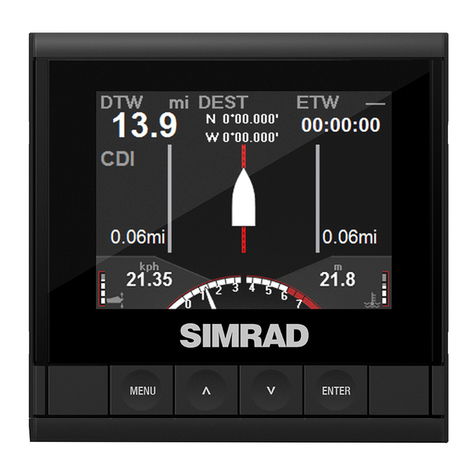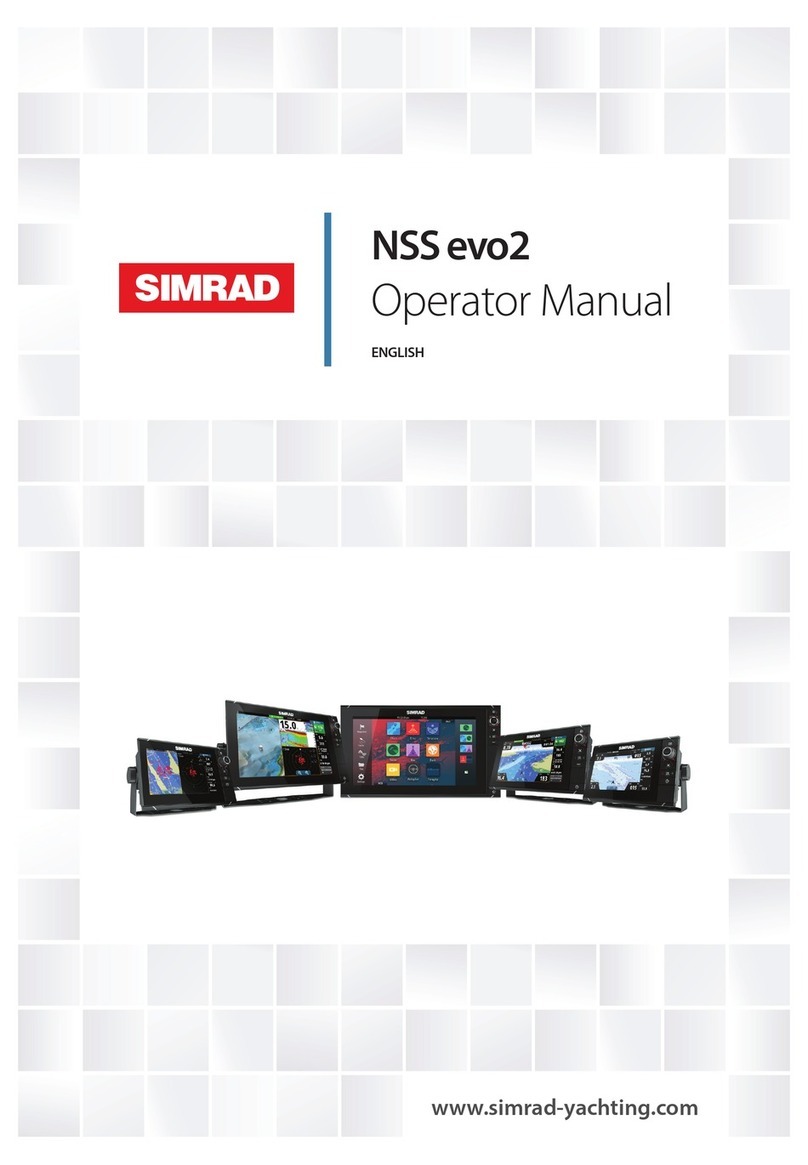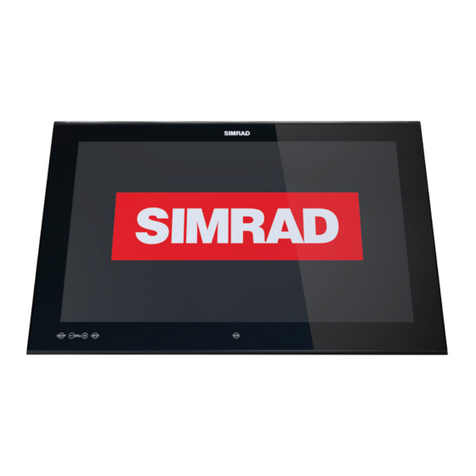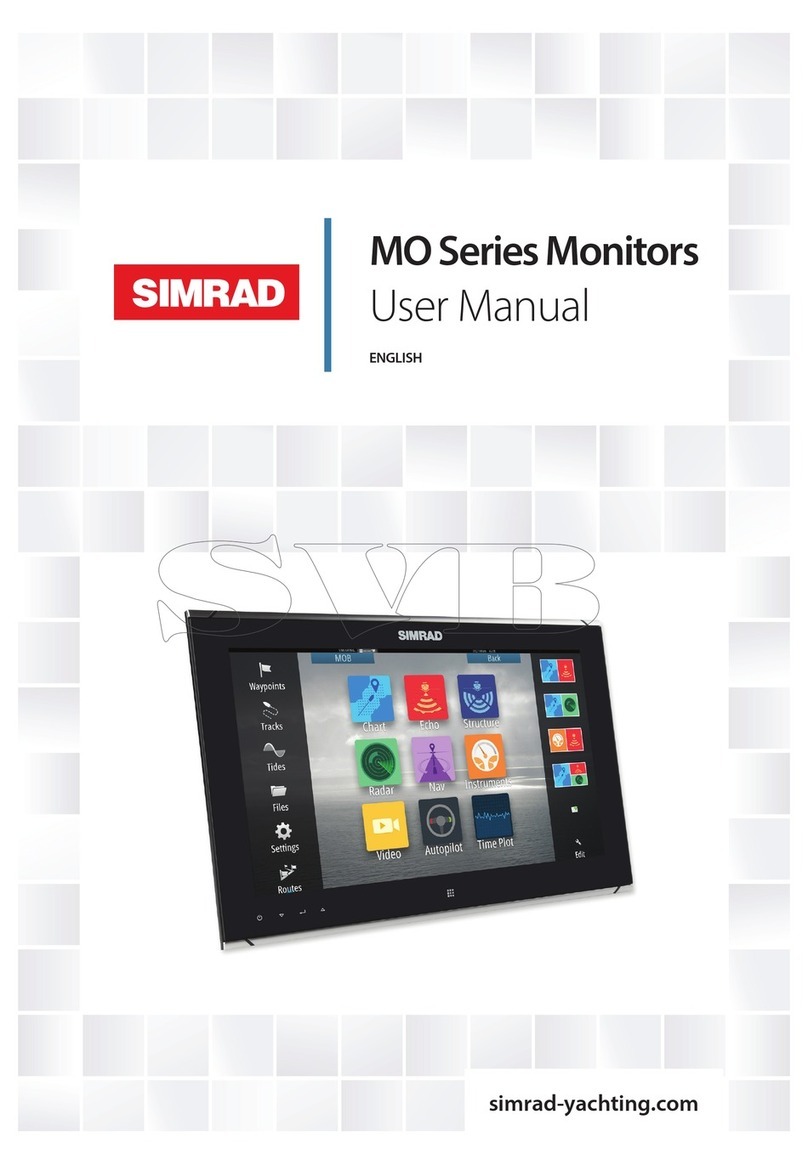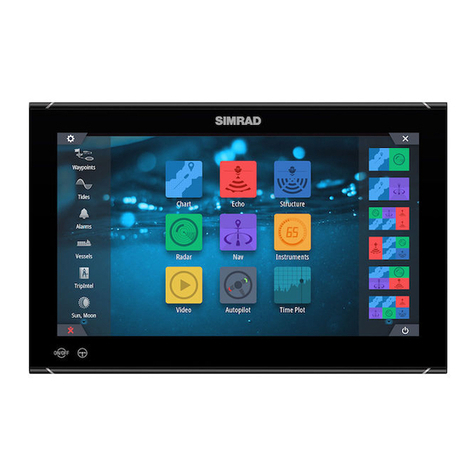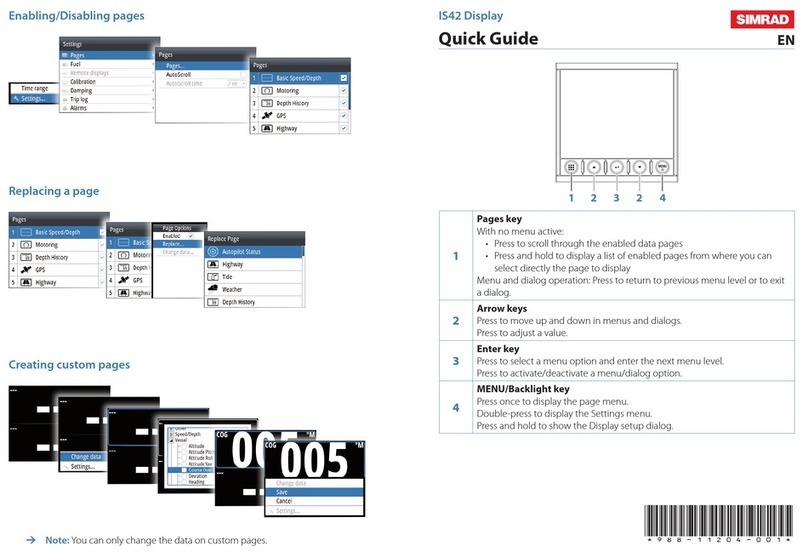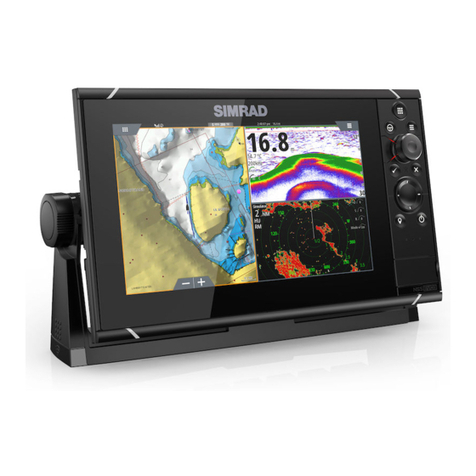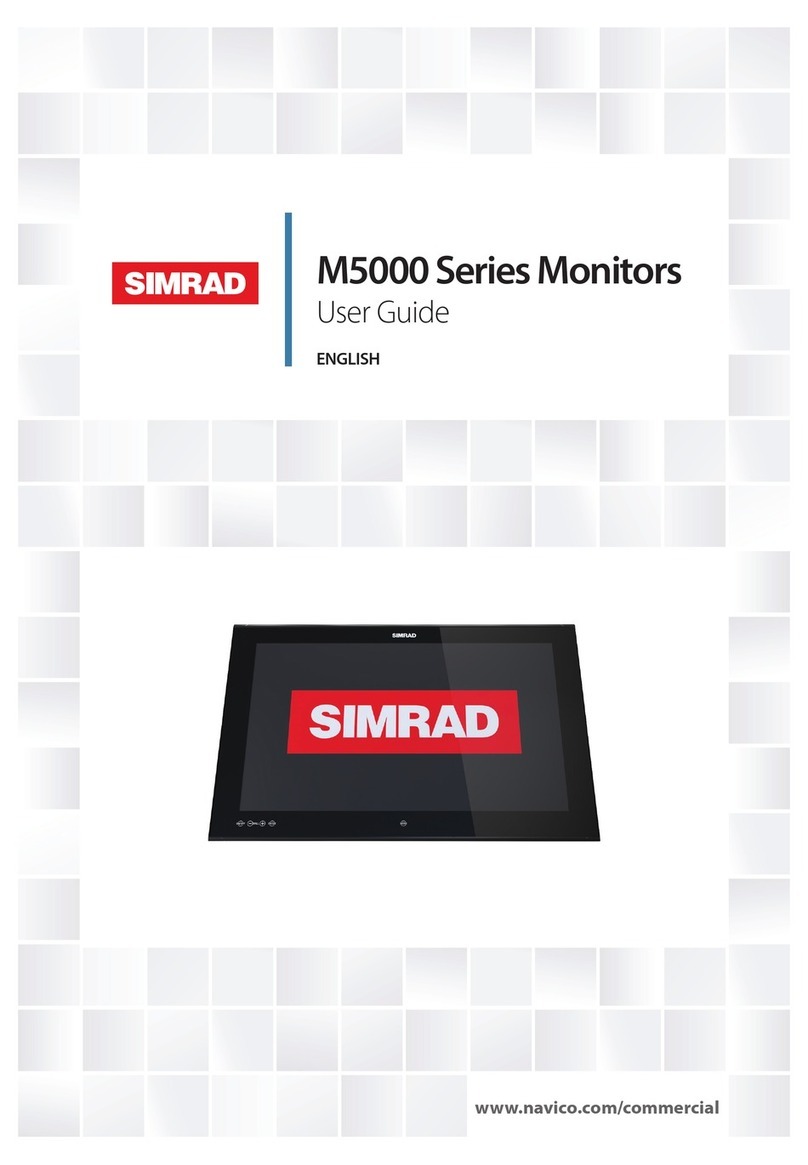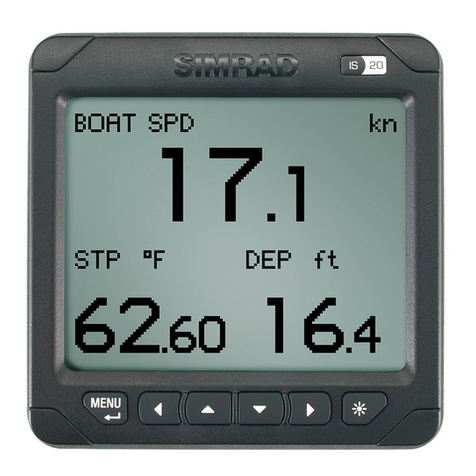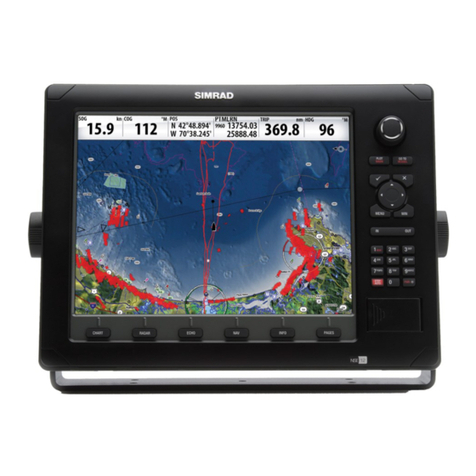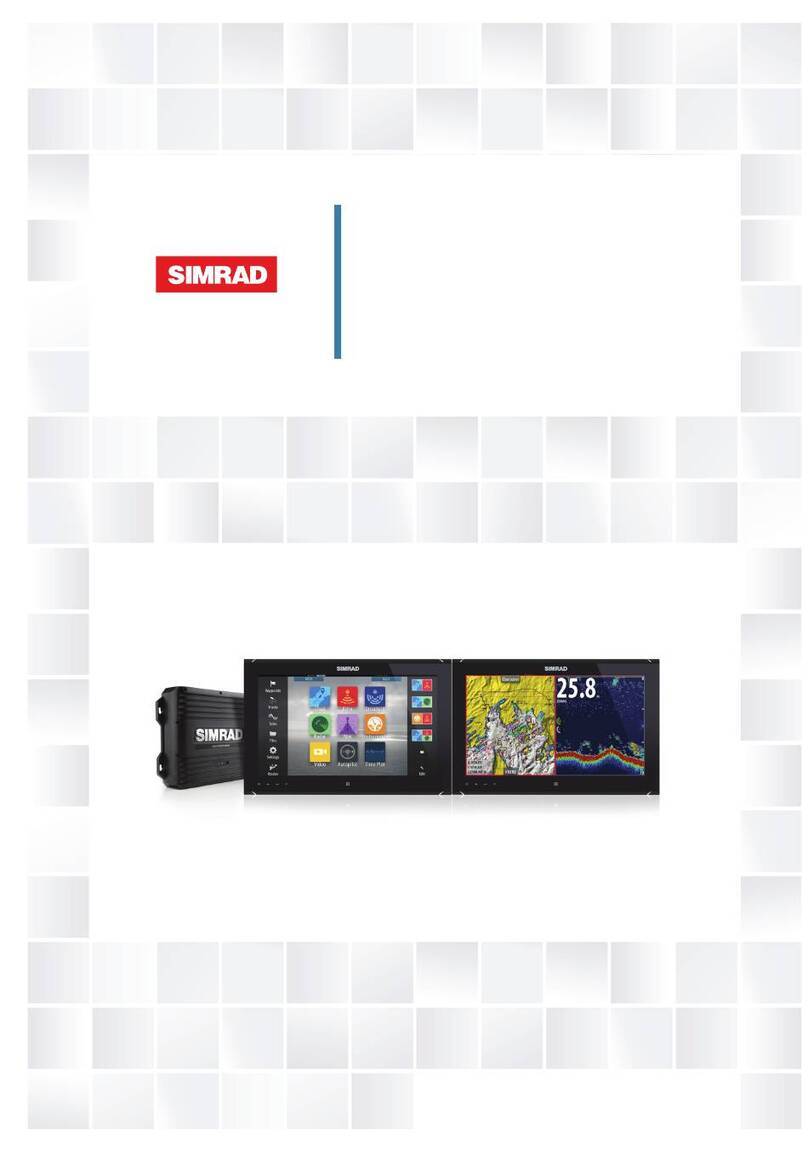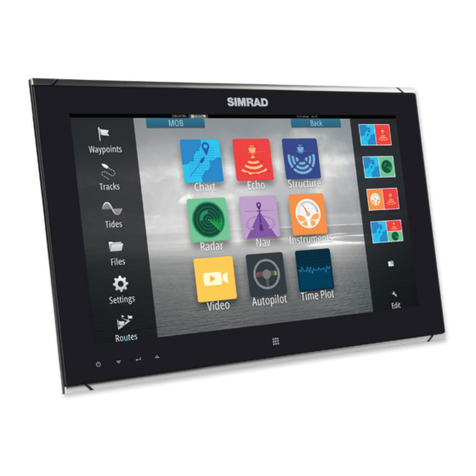
Australia and New Zealand
Navico declare under our sole responsibility that the product conforms with the
requirements of:
•level 2 devices of the Radiocommunications (Electromagnetic Compatibility) standard
2017
Internet usage
Some features in this product use an internet connection to perform data downloads and
uploads.
Internet usage via a connected mobile/cell phone internet connection or a pay-per-MB type
internet connection may require large data usage. Your service provider may charge you
based on the amount of data you transfer. If you are unsure, contact your service provider to
confirm rates and restrictions.
Trademarks
Navico®is a registered trademark of Navico Holding AS.
Simrad®is used by license from Kongsberg.
HDMI®and HDMI™, the HDMI Logo, and High-Definition Multimedia Interface are trademarks
or registered trademarks of HDMI Licensing LLC in the United States and other countries.
NMEA®and NMEA 2000®are registered trademarks of the National Marine Electronics
Association.
SD™and microSD™are trademarks or registered trademarks of SD-3C, LLC in the United
States, other countries or both.
Navico product references
This manual refers to the following Navico products:
•Broadband Radar™ (Broadband Radar)
•Broadband 3G™ (Broadband 3G Radar)
•Broadband 4G™ (Broadband 4G Radar)
•Halo™ Pulse Compression Radar (Halo Radar)
About this manual
Images used in this manual might not exactly match the screen on your unit.
Important text conventions
Important text that requires special attention from the reader is emphasized as follows:
ÚNote: Used to draw the reader’s attention to a comment or some important information.
Warning: Used when it is necessary to warn personnel that they should
proceed carefully to prevent risk of injury and/or damage to equipment/
personnel.
Intended audience
This manual is written for system installers.
The manual assumes that the reader has basic knowledge about this type of equipment with
regards to:
•installation work to be carried out
•nautical terminology and practices
Preface | NSO evo3S MPU Installation Manual
